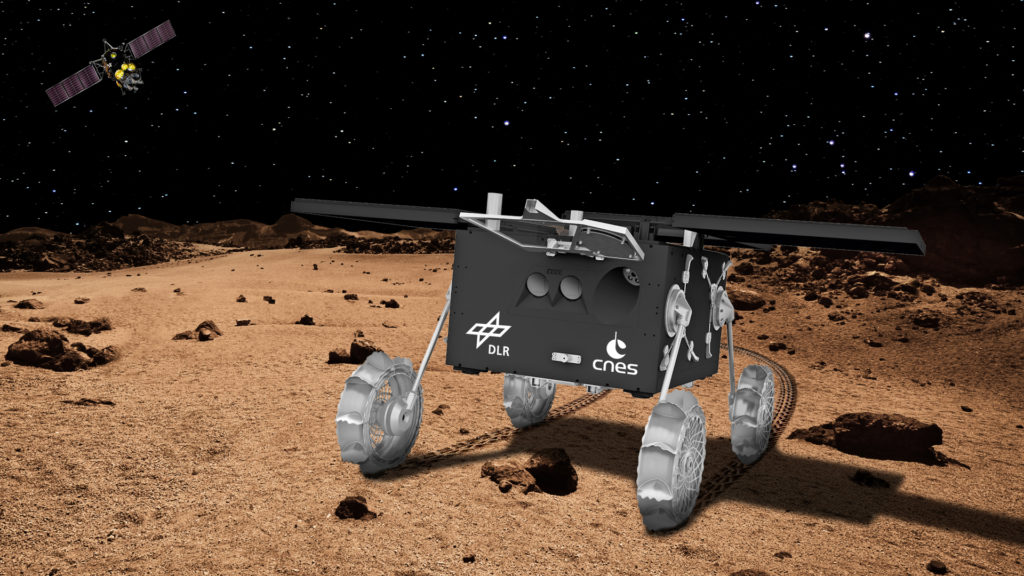|
Listen to this article  |
Silicon Sensing’s CRM200 PinPoint Miniature Gyroscope. | Source: Silicon Sensing Systems
Robotic missions to Earth’s moon are challenging enough, but controlling motion on the moons of Mars requires precise technology. Silicon Sensing Systems Ltd. The German Aerospace Center has contracted to supply two miniature PinPoint gyroscopes for use in the Martian Moons ePloration mission. The goal of the mission is to send rovers to explore Deimos and Phobos.
The German Aerospace Center (DLR) will use the company’s CRM200 gyroscopes on a vehicle that will explore the larger of these moons, Phobos. There, this rover will collect surface samples. A set of PinPoint gyroscopes will help detect unwanted movement of the rover on an unknown surface.
Depending on the initial inspection of the propulsion system, which includes gyroscopes, the team activates an optional safety module in the software. This module will automatically prevent instability while the rover is driving.
“PinPoint has a proven track record in space applications, but this will be a breakthrough use on a remarkable mission where the reliability and durability of this gyroscope will be critical,” said David Sommerville, CEO of Silicon Sensing Systems.
Founded in 1999, Silicon Sensing Systems designs gyroscopes and inertial systems. The company, jointly owned by Collins Aerospace and Sumitomo Precision Products, develops silicon-based, micro-electromechanical systems (MEMS) based navigation and stabilization technology.
Silicon Sensing said it has shipped millions of MEMS gyroscopes and accelerometers to thousands of customers.
Silicon Sensing designs compact, robust gyroscopes
Only the size of a fingernail, approximately 5 mm x 6 mm (0.1 x 0.2 in), PinPoint is the smallest gyroscope in Silicon Sensing’s MEMS line of products. The company said it is a proven low-drift single-axis angular velocity sensor with many applications in various market sectors.
Combined, these robust sensors can accurately measure angular velocity across multiple axes. This includes any combination of pitch, yaw and roll – all while consuming very little power, according to Silicon Sensing.
As part of the rigorous selection process for this exploration program, PinPoint completed total ionizing dose (TID) testing at 17 kRad radiation and proton tests (up to 68 MeV/proton). This testing proved the suitability of the gyro for the spatial requirements.
“We are also seeing an increasing number of applications in the space sector for our latest tactical IMU (inertial measurement unit) – the DMU41 – which was recently selected for a number of programs in low Earth orbit,” Somerville said. “This growing interest in our inertial sensors and MEMS-based systems reflects the potential of this technology with its robust reliability, compact size and low power consumption for this sector.”
 Sign in to speak.
Sign in to speak.
The mission is being prepared for the Martian moons
JAXA, the Japanese space agency, is leading the Martian Moons eXploration (MMX) mission. It will explore two moons of Mars with contributions from NASA, ESA, CNES and DLR. CNES, France’s national space agency, and DLR are jointly contributing to the 25 kg (55.1 lb.) rover.
About a year after leaving Earth, the probe will arrive in Martian space and enter orbit around the planet. It will then move into a quasi-satellite orbit (QSO) around Phobos to collect science data, jettison the rover and collect a sample of the moon’s surface.
After observing and collecting samples, the spacecraft will return to Earth with the material collected from Phobos.
The current plan has a launch date of 2026, followed by an insertion into Mars orbit in 2027. The team said they hope to return the probe to Earth in 2031.

The MMX rover will eventually collect samples from the surface of one of Mars’ moons. | Source: Silicon Sensing Systems
